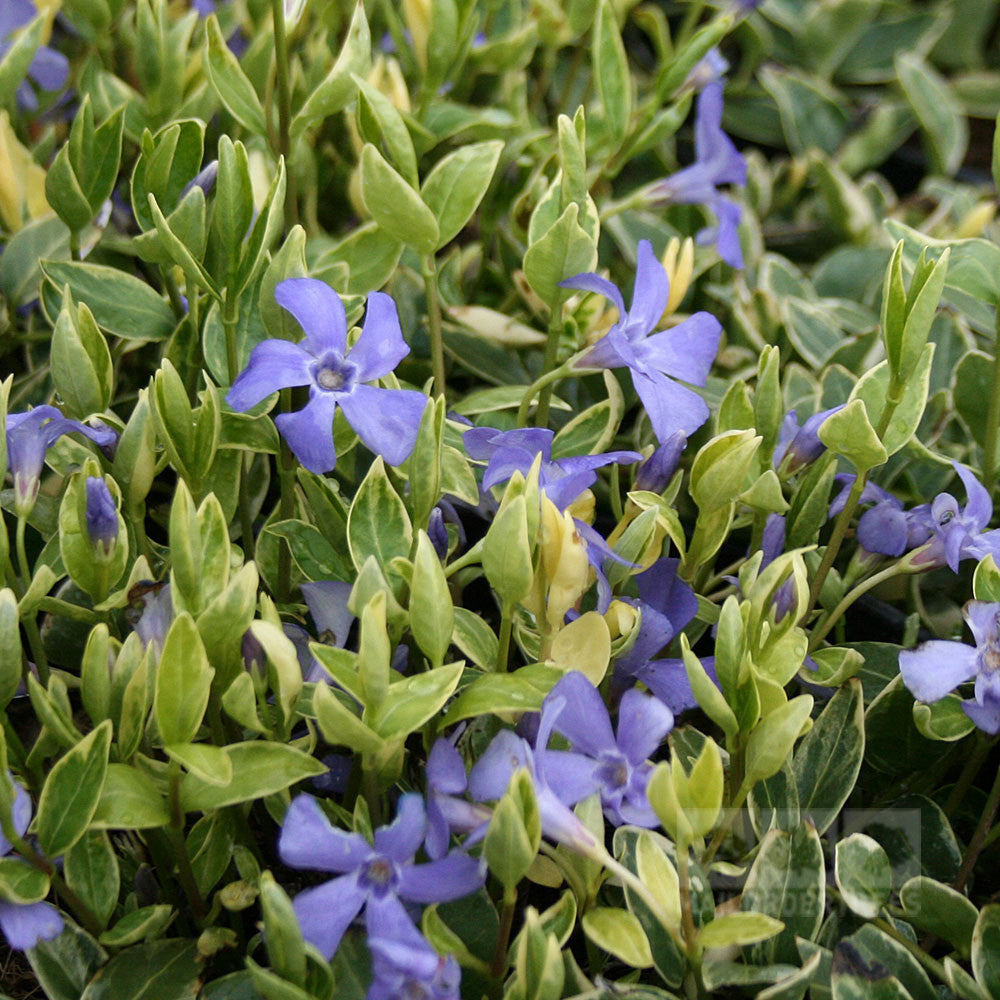

The long, trailing stems root at the nodes as they go along the ground to form a. Borne over a long period, they continue to flower intermittently throughout summer into fall and are valuable for enlivening dark areas. Return to the Table of Contents | Download a PDF of Plant Invaders of Mid-Atlantic Natural AreasĪnd questions about the website should be directed to the webmaster. Vinca minor (Lesser Periwinkle) is a vigorous, evergreen mat-forming perennial with glossy dark green leaves and large lavender blue flowers from mid-spring to early summer. It is also widepread in North America, and is quite invasive in. Mowing followed soon after by application of a systemic herbicide would improve control greatly (see Control Options). Lesser periwinkle is native to Europe and western Asia, and widely introduced around the world. The stems of ‘Illumination’ are greyed purple in color when mature. The mature foliage has creamy yellow centers surrounded by dark green margins. Where appropriate, mowing can be used to cut plants back but will likely have to be repeated regularly. A new Vinca minor cultivar named ‘Illumination’ is characterized primarily by the unique variegation of its foliage. Category II - Species that have shown a potential to disrupt native plant communities.

This definition does not rely on the economic severity or geographic range of the problem, but on the documented ecological damage caused. Periwinkle can be pulled by hand, dug up or raked up, being sure to remove underground portions. Category I - Species that are invading and disrupting native plant communities in Florida. Look-alikes: may be confused with several close relatives of this plant, including bigleaf periwinkle (Vinca major), imported from Europe, and Madagascar periwinkle ( Catharanthus roseus), native only to Madagascar, both also invasive in natural areas in the mid-Atlantic and other parts of the United States and winter creeper ( Euonymus fortunei). Vinca minor Illumination £ 9.

Spreads: vegetatively through rhizomes.across, five petals blunt at tip, arranged in spiral springtime no fruits or seeds typically. Flowers, fruits and seeds: flower blue, lavender or white, about 1 in.Leaves: opposite, dark green, glossy, oval to lance-shaped, thick-textured may be variegated.(Vinca minor) and greater periwinkle (Vinca major), which are low-growing, evergreen perennials often used as groundcovers. Typically 8 to 12 inches tall, annual vincas grow well in hanging baskets, containers, beds and borders. Plant: vine-like erect or trailing groundcover mostly evergreen stems slender. A favorite choice for southern gardens, annual vinca flowers are sun loving and heat tolerant.Periwinkle grows vigorously and forms dense and extensive mats along the forest floor, displacing native herbaceous and woody plant species. It inhabits open to shady sites including forests and often escapes from old homesites. Periwinkle has escaped cultivation and is invading natural areas throughout the eastern U.S. This pretty, prostrate, evergreen shrub is excellent. It is still commonly sold as an ornamental ground cover. Pretty, pale blue or blue-violet flowers from April to September and lance-shaped, dark green leaves. Common periwinkle was first introduced into North America in the 1700s as an ornamental.


 0 kommentar(er)
0 kommentar(er)
